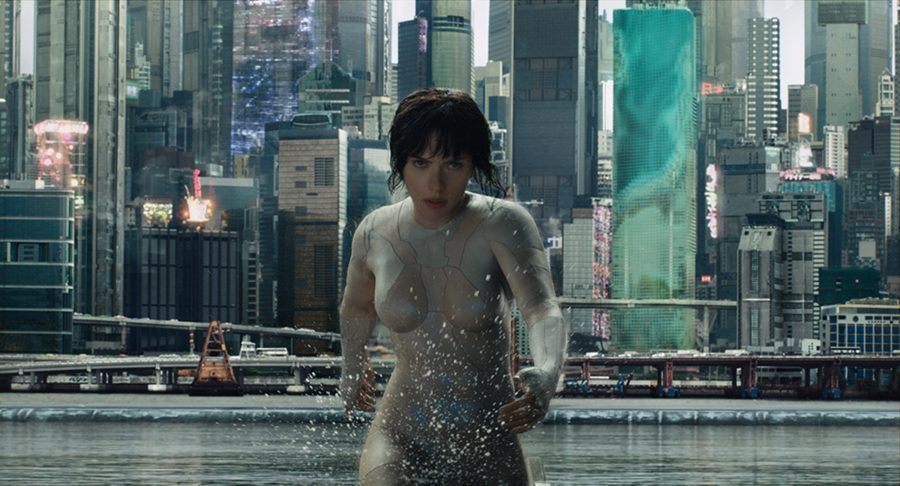“Ghost” is mere shell of source material
“Ghost in the Shell,” starring Scarlett Johansson, is the latest film adaption of the Japanese manga of the same name. The film has received mixed reviews from critics and currently carries a 46 percent approval rating on Rotten Tomatoes.
Apr 10, 2017
In the near future of the sci-fi film “Ghost in the Shell,” cybernetic implants have become commonplace, with people everywhere using this technology to enhance their sight, strength and intelligence. This is all thanks to Hanka Robotics, the flagship of this augmentative technology. But with this advanced wave of tech, there is an uprising of cybercriminals and hacking.
To deal with this new type of crime, Hanka creates a mechanical body — a shell — that can house a human brain, as opposed to AI, like other robots.
This new type of android, named Mira “The Major” Killian, is assigned to Section 9, an anti-terrorist security force that deals justice to the rampant hackers. While on the trail of the latest perpetrator, a criminal named Kuze, Mira begins to experience glitches in her systems that may be the key to finding Kuze, as well as the answer to who she was before she was put into the shell.
Directing: 2/5
“Ghost in the Shell” joins the numerous anime films, TV series and video games based on the manga of the same name by Masamune Shirow. While there are different continuities of the story, they revolve around the same concept of “The Major” and Section 9 cracking down on cyber criminals.
These various adaptations also tend to deal with philosophical questions about existence and what it means to be human in a vastly technologically advanced future.
Unfortunately, director Rupert Sanders isn’t quite able to reach the heights of the original source material and instead goes in a different direction. More on that later.
Nevertheless, “Ghost in the Shell” is still a visually stunning and highly stylized crime thriller.
Writing: 2/5
While director Rupert Sanders manages to seamlessly blend ideas from multiple iterations of the franchise, his version of “Ghost in the Shell” lacks the unique and intellectual depth that is often a key component to the overall theme of this cyberpunk universe.
Instead, the film focuses more on “The Major’s” past instead of her future. In other installments, primarily the 1995 anime film, “The Major” deals with her continual evolution and enlightenment as she walks the line between human and machine.
In this newest version, it is already hinted that “The Major” is at the height of technology and of her power. With nowhere else to go, development-wise, the story becomes a cliché amnesia tale of recovering lost memories with the flavoring of neo-noir, similar to that of Ridley Scott’s “Blade Runner.”
Acting: 2/5
Scarlett Johansson is the leading lady as Mira “The Major” Killian. Johansson once again shows her action star skills, but it is ultimately Pilou Asbæk as her partner Batou who steals the show with the most human and engaging performance of the movie.
The rest of the cast, “Beat” Takeshi Kitano as Chief Daisuke Aramaki, Julliette Binoche as Dr. Ouelete, Peter Ferdinando as Cutter and Michael Pitt as Kuze, are fairly traditional one-note characters that don’t do much more than move the plot along.
Overall:
Commendations are in order for Rupert Sanders being willing to take on the significant undertaking of adding to the famous “Ghost in the Shell” franchise.
But in the end, his efforts struggle between homage and innovation that ultimately results in a typical amnesiac story, albeit with a visually satisfying backdrop.








